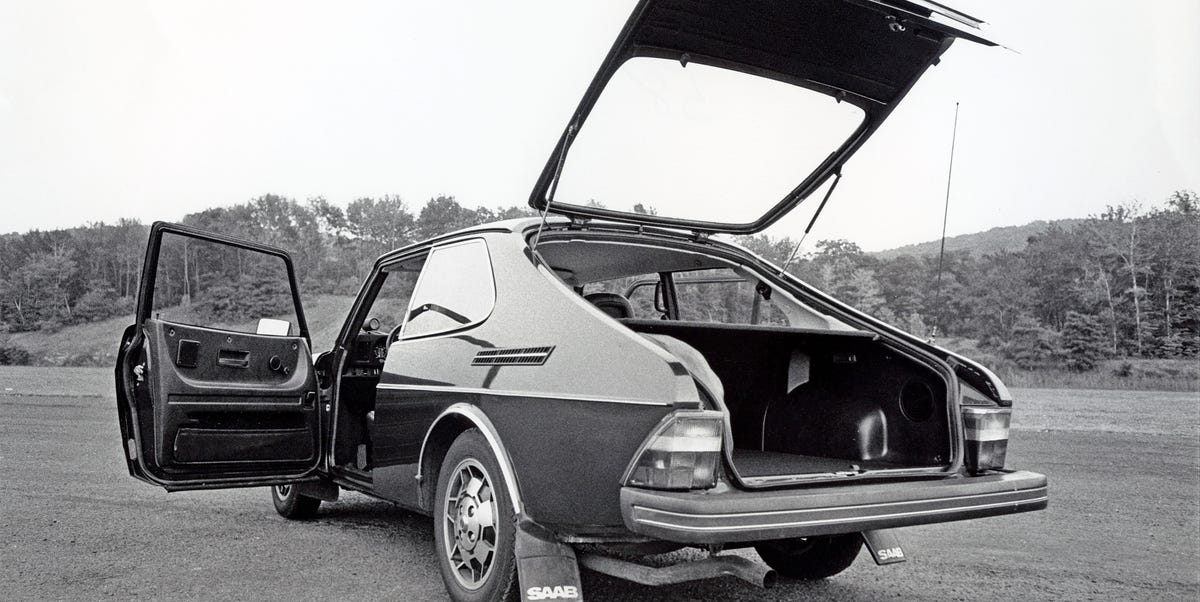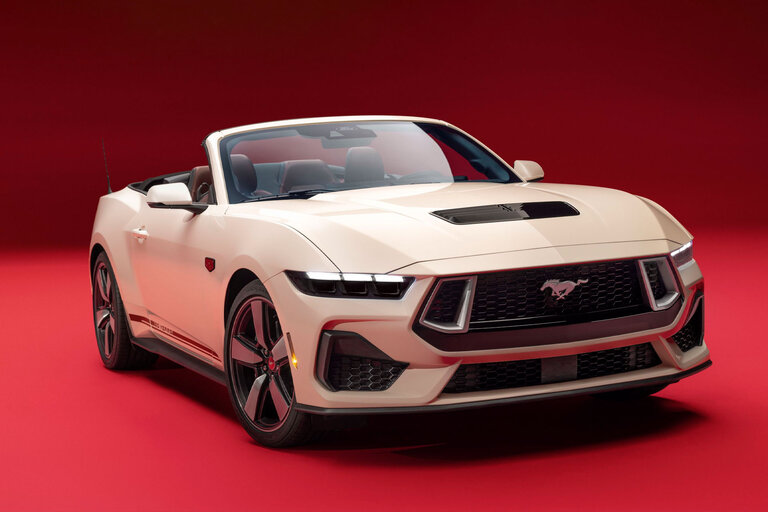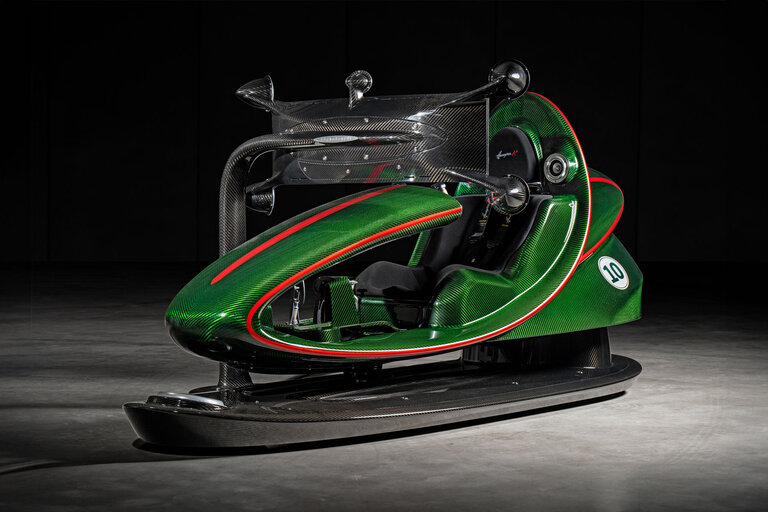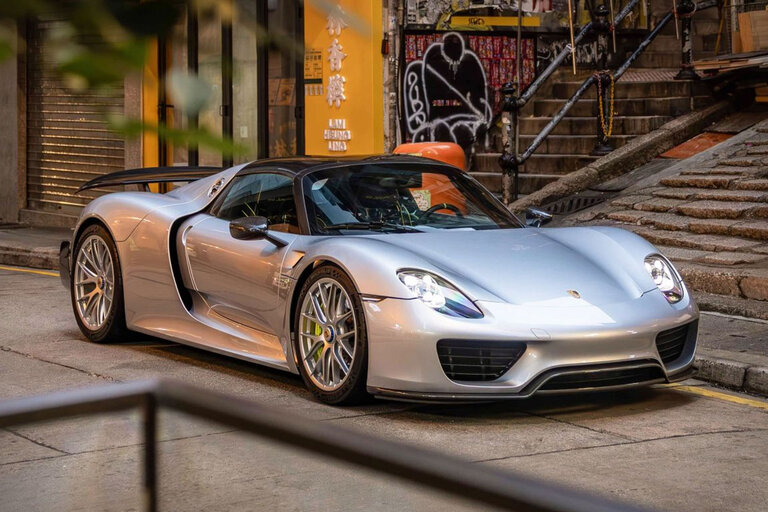
From the October 1977 issue of Car and Driver.
You can’t trust car companies these days. Some of them have absolutely no respect for tradition. The subject of this road test is a perfect case in point. All we did was turn our backs for a few minutes, and Saab jumped out of its pigeonhole.
Everybody knew the well-built Swede; stout of bumper and roof supports, it was the perfect car to have if you were planning a couple of endos for your summer vacation. At one time, the company even went so far as to make a special pitch to this sort of driver with an ad that showed a 99 being dropped on its roof. The car was so tough the landing barely scratched the paint. Such is the stuff of legends—boring legends, mostly.
And the same applies to the electric bun-warmer seat and the side-window defrosters and the slush-deflecting mud flaps and the thigh-high ground clearance that keeps you from being high-centered on a snowbank. Saabs are made in Sweden, where the snow sometimes comes up to your earlobes, and nobody reckons that to be an excuse for staying home. If you live in Bemidji, Minnesota, nothing more needs to be said. You just sign the order form and be done with it. On the other hand, if you live much south of there and are like most folks, you don’t sign the order form and are just as done with it. Because everybody knows that Saabs are great for cold weather, but according to conventional wisdom, not much else.
So it comes as something of a shock to all of us to discover that safe, sane, snow-proof Saab now has fetched up a model that’ll get second-gear rubber and double the double-nickel any day of the week. Who knows? Maybe the law of gravity will be repealed next.
We are speaking here of the Saab Turbo. Never mind that it sounds like a joke, right up there with Henry J Turbo on the laugh meter. Don’t be embarrassed. Go ahead and indulge yourself. It’s not like laughing at a cripple. Saabs can take it. And when you get all done cracking Saab jokes, you’ll find the one thing that is even more fun is driving Saabs. They are great, good-natured cars, as solid as the Swedes who build them, and true, rugged individualists in a market of me-too cars.
The Turbo is not a radically different Saab. It is noticeably different in the way it acts, to be sure, but mostly it’s just a better Saab. Before 1975, the Saab 99 was just another family hauler, heavy on passenger space and very light on driving fun. But for 1975 the two-liter engine was upgraded to the Bosch K-Jetronic fuel injection. This, along with a careful job of valve-train and ignition tuning, uncovered a mother lode of horsepower in the single-overhead-cam, four-cylinder engine. At the same time, throttle response was improved to the point of being the best of any emissions-controlled engine anywhere. And to complete the package, Saab redesigned the transmission and the shift linkage. The gearbox and differential are well forward of the passenger compartment so a very long shift linkage is required. In many cars—the Porsche 911, for example—this long distance is enough to keep the transmission from ever getting a clear message from the driver, but it is no bother in the Saab. The shifting is as accurate and sure as it would be if the lever poked right out of the top of the box. So with just these few changes, the Saab 99 went from a rather efficient dullard to a sparkling performer. It suddenly became one of the neatest manual-transmission cars around. The engine would give you revs when you ordered them. No waiting. And the shifter would cut a new gear as fast as your hand could move. Mustangs and Monzas couldn’t manage that, Fiats felt like they had millstones for flywheels, and even BMWs were hard-pressed. So the Saab moved right smartly into the small circle of hero cars.
And every year since then, the car gets a little better. The steering gets easier, the upholstery is plusher, and occasionally there is a spring rate or shock-absorber change. Still, there is very little that you can point out with absolute authority as brand-new. But every year the new models feel better. The body seems more solid and more rattle-free, the trim is anchored on a bit tighter, all the buttons and levers seem more predictable in their motions.
While the upright and stolid external shape encourages jokes, there is really nothing at all that is funny about a Saab. Quite the contrary, it is one of the most serious cars around. There are no marketing gimmicks. You won’t find digital clocks or weather eyes in residence on the dashboard. No jewelry-tooled filigree moldings or imitation hand-stitched padding will meet your gaze. And there is not a square centimeter of brocade to simulate elegance. There is only equipment: levers to adjust the height and rake of the front seats (in addition to the usual fore-and-aft and backrest angle adjustments), levers to fold down the rear seat for more cargo space, levers to regulate ventilation flow and a storage bin on top of the dash where it is easy to reach. And not least, the most convenient three-point safety belt of any car on the market. That’s a Saab for you, function instead of flash.
And that attitude, more than anything else, explains the turbocharger. What better way to combine performance and efficiency under the same hood? Saab’s turbo installation offers more pleasure per dollar (never mind that the price is yet to be announced) than any other on the market simply because it has so many ways of telling you that it is there. First off, you can see it. The turbo itself is up there in the right front corner of the engine compartment. All you have to do is peer in over the fender and there it is. Porsche buried the one in the Turbo Carrera under so much sheetmetal you have to crawl under the car to see it, and Buick’s turbo is so hidden by pipes and hoses that what you do see looks more like an EGR valve. But Saab’s engineers, bless those Swedish elementalists, have located the turbo and all of its valves and piping right out in plain sight for your viewing pleasure.
You also can hear it. During straight and level driving, it makes no more noise than the battery, but when you toe into the power anytime above 2500 rpm, you’ll hear a small whistle. It’s not very loud. Probably your passengers won’t even notice it. But it rises in pitch very quickly as the compressor speed builds up, and falls just as rapidly if you lift out of the power. If your foot is agile, you could probably even play a tune with it.
Of course, you can also feel the turbo when it goes to work. It comes on with a fair rush, not much like the slam of a Turbo Carrera but a mighty exhilarating push nonetheless. Maximum torque is 160 pound-feet at 3500 rpm, a number you’d never get from a streetable two-liter that was normally aspirated. Power peaks at 5000 rpm with 135 SAE net horsepower, up 25 hp at 500 less revs—and that too is a generous figure for a two-liter.
Saab has chosen a rather unusual way of controlling boost pressure. The AiResearch turbocharger has a built-in wastegate to bypass exhaust flow around the turbine when a predetermined pressure is reached. So far, this is perfectly normal. But Saab differs from Buick and Porsche in that the wastegate senses exhaust manifold back pressure. Although the others boost up to a predetermined intake manifold pressure and then hold that level all the way to the redline, Saab boosts up to a given exhaust back pressure and then holds it to the redline.
The two methods produce far different power curves. The Porsche-Buick method tends toward a very level torque curve from the point of maximum boost on up to the redline. At the same time, the power curve rises steadily, and the car seems to accelerate better and better as it approaches the redline. The Saab motor, on the other hand, feels like a normal engine, only stronger. The torque curve is soft below 1500 rpm, rises abruptly between 2000 and 3000, then drops off after 3500 much as a normal engine would. So the output is very strong in the midrange but fades noticeably in the upper reaches.
Saab spokesmen say that their constant-exhaust-pressure system lends itself more readily to emissions control. The engine is equipped with a three-way catalyst and feedback sensor—the same Bosch system that is known as Lambda Sond in Volvos—and the constant-exhaust-pressure system blows less hot exhaust gas through the catalyst at high engine speeds than the more usual constant-intake-pressure arrangement. Because of this elaborate emissions-control device, the Turbo will pass both federal and California requirements and is intended to operate on unleaded regular gasoline.
Compared to a normally aspirated Saab—a 1977 California model with the same emissions-control equipment—the Turbo is much quicker, clearing the quarter-mile in 17.5 seconds at 81.9 mph, for an improvement of 0.5 seconds and 8.9 mph. The Turbo’s 110-mph top speed is also better by three mph. And this is accomplished against the handicap of gear ratios in the transmission that have been lengthened by about eleven percent. (Also, the Wagonback test car is 159 pounds heavier than the two-door sedan, tested.) Actually, longer ratios work well in turbocharged cars. The extra torque more than offsets the change in gear ratios so acceleration is improved, but the new ratios improve fuel economy and engine noise level during normal driving.
Turbochargers also settle into the harness better when they have a long gear to pull against. This is because the speed of the compressor—and therefore the amount of boost—depends entirely upon the volume of exhaust gas flowing through the turbine. During normal driving, when the throttle is just cracked open, there is very little flow, so the compressor idles much like a pinwheel in a faint breeze. But when you open the throttle wide for more power, exhaust flow increases, which then drives the compressor fast enough to make boost. But this speeding-up process takes time, and it is this delay that is known as turbo lag. With a manual-transmission car, you go through a lag cycle every time you lift off the gas to shift, which means that the power is a bit soft for the first second or so after you engage the next higher gear. And it follows that if you have a very close ratio five-speed mated to a typical turbo engine, you might be operating in the soft zones enough of the time to actually slow down the acceleration process even though you theoretically have nearly ideal ratios most of the time. Porsche feels the same way and uses only a four-speed transmission with the Turbo Carrera.
Because turbochargers operate on exhaust-gas flow, at very low engine speeds there will not be any boost simply because the engine doesn’t produce enough exhaust gas to run the compressor. This has nothing to do with turbo lag. For example, if you give the Saab full throttle at 1000 rpm, it accelerates purely as a normally aspirated engine. There is no boost whatsoever. And no lag. Just a shortage of exhaust gas. But by the time you reach 1500 rpm, the exhaust flow has increased enough to produce a slight boost. And from there up to about 3500 rpm, the boost climbs in direct proportion to engine speed.
This combination of turbo lag and minimum engine speed necessary for boost makes a turbo car tricky to drive in traffic. The Saab is so smooth and relaxed that there is a great temptation to get it up into third gear as soon as it reaches walking speed and ease on down the street. But you can really catch it flatfooted that way too. You see an opening you want, nail the throttle and aim for it—and nothing happens. The tach shows 1300 revs, and the wonderful turbo motor is still asleep.
Keeping it awake requires a little dexterity with the foot pedals. You have to keep the revs up, at least to 2500 for best results. And you must plan ahead. Look for those openings in advance. Just before you pounce, you can crank up the turbo by riding the brake a bit and holding the throttle open to maintain speed. If you have enough eyes to watch traffic and the boost gauge too, you’ll notice the needle move up to the positive pressure area—or at least less negative if you’re running at low revs. And if your ears are clean, you’ll hear that whistle. Then when you take your foot off the brake and open the throttle farther, you get that big-motor lunge. People who want to drive along half asleep don’t like turbo motors for this reason. Too much work. But for the driver who is willing to pay attention, the turbo offers not only an unbeatable combination of performance and economy; it also pays dividends on your cunning techniques.
Saab expects to have production Turbos for sale in this country in January. At this point, the plan is to offer the engine in both the regular two-door EMS body and in the three-door Wagonback. The test car was one of 100 pre-production Turbos that Saab built as trial balloons to test both public reaction and durability in the hands of non-factory drivers. For the most part, the Turbo has the same equipment—cast-alloy wheels, 175/70HR-15 tires, front spoiler, and Bilstein shocks—that is standard on the EMS. Two additions are an intake air scoop on the right side of the spoiler and an oil cooler on the left.
Despite all the uplifting of Saab’s image in the last few years and the fact that you can now buy a high-technology turbo motor right from the factory, Saabs are still a long way from being your normal cars. We were reminded of that just yesterday when one of the attendants in the Red Ball Garage delivered the Turbo to the ground floor for us. He eased it back off the elevator, found first gear and, with a chirp from the front tires, aimed it for the front door. These guys move so many cars every day that they’ve got the delivery down to one smooth motion. Just before he came to a stop he pushed the lever into neutral, pulled up the parking brake and turned to open the door in a move that would have had one foot in the ground just as the car stopped rolling. But the door didn’t open. Instead, there was a kind of frustrated scratching sound on the inner door panel followed by a rolling skyward of his eyeballs. He couldn’t find the door handle.
Nobody finds the inside door handle of a Saab on the first five tries. Saabs are different. That’s half their charm. The other half, of course, is that they work.
Counterpoint
Could it be that Saab doesn’t want to be Swedish anymore? That the stolid, traditional Scandinavian virtues of rationality and predictable responsibility are no longer critical factors in every product decision? The firm has its sights on a brave new image, and the revised recipe calls for a BMW-like blend of technological refinement, marketing bravado, and fast cars. Saab’s advertising has been beating this drum for the last year. With the debut of the Turbo, however, be prepared for a full marching band.
And rightly so. The new Saab Turbo is a genuine performance car: strong, supple, good off the line, fast through the corners, whisper smooth, and lovingly screwed together. Speed comes so effortlessly that the only way to stay out of traffic court is to force yourself to check the speedo every 30 seconds—and I can promise what you find there will delight you. —David Abrahamson
Years ago I got interested in Saabs because of their engines—in those days, two-stroke, three-cylinder affairs perfectly suited to the demands of sidecar racing. With time, though, the rest of the car evolved sufficiently to capture the world’s attention, and the powerplants became more mundane. But now they’ve given us a delightful blower-motor, and once again I’m completely beguiled by the quirky, paradox-laden Swedish car. Because the Saab Turbo is not only quick, it’s also a genuine Fourth-of-July driving experience, full of sudden pleasures and high spirits as you fight to keep the revs and boost up, twist the thick leather wheel hard to minimize torque steer, and listen to the tires howling like demons. They’ve all been competent machines, but this latest Saab has a huge dose of that new-old magic. And who knows? Maybe the turbo motor would make a good sidecar engine. —Steve Thompson
The relative youth of my associates here at Car and Driver has led some of them to the mistaken conclusion that Saabs only recently became good cars. They can be forgiven their youth, but not their ignorance. Saabs have always been good cars. I saw my first one in 1953, drove my first one in 1957, saw Eric Carlsson drive one in 1960, and I am here to tell you that Saab didn’t need a turbocharger to go fast. However, the addition of a turbocharger to the already-spectacular Lambda Guard engine is absolutely guaranteed to make your eyes bug out. This is a rocker, pal, and you’d best be wearing your shorts and sneakers if you’re going to try to keep up with it. One heroic blast down the highway is enough to convert anybody. Without prior knowledge of the Saab powerplant’s configuration, the average keen-type wouldn’t know what in the world he had hold of. It’s smooth, quiet, and quick. It’d wind right off the clock without the 5700-rpm rev limiter, and it’d be weeks before the chagrin of a busted engine would replace the euphoria of the Saab Turbo’s performance. If you have never driven a Saab, you have been culturally deprived for too long. You owe this to yourself. —David E. Davis. Jr.
Specifications
Specifications
1977 Saab Turbo
Vehicle Type: front-engine, front-wheel-drive, 5-passenger, 2-door sedan
PRICE
As Tested: N/A
ENGINE
turbocharged SOHC inline-4, iron block and aluminum head, port fuel injection
Displacement: 121 in3, 1985 cm3
Power: 135 hp @ 5000 rpm
Torque: 160 lb-ft @ 3500 rpm
TRANSMISSION
4-speed manual
CHASSIS
Suspension, F/R: control arms/multilink
Brakes, F/R: 11.0-in solid disc/10.6-in solid disc
Tires: Pirelli Cinturato CN-36
175/70HR-15
DIMENSIONS
Wheelbase: 97.4 in
Length: 174.0 in
Width: 66.5 in
Height: 56.7 in
Curb Weight: 2667 lb
C/D TEST RESULTS
30 mph: 3.2 sec
60 mph: 9 sec
1/4-Mile: 17.5 sec @ 82 mph
100 mph: 36.5 sec
Top Speed (observed): 110 mph
Braking, 70–0 mph: 212 ft
C/D FUEL ECONOMY
Observed: 22 mpg
#Saab
Source link





